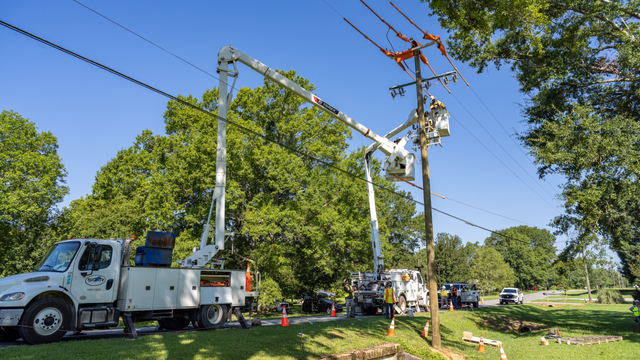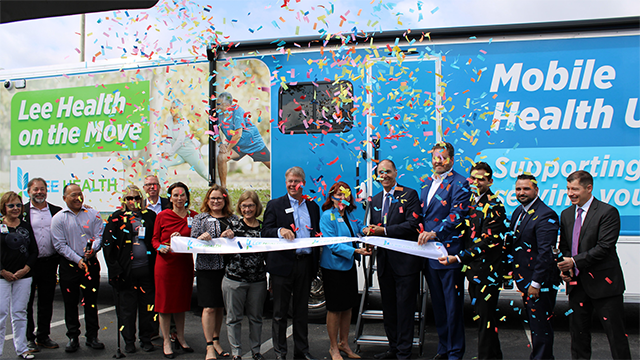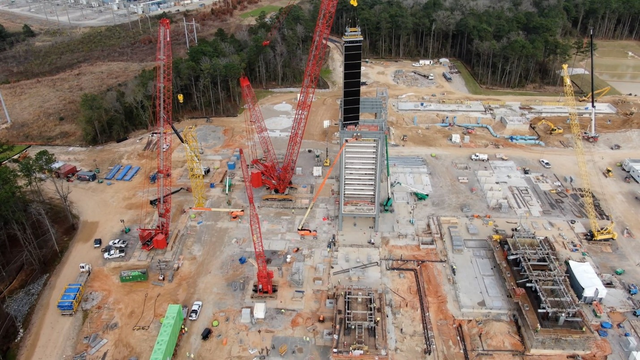By Rick Azer and Meghan Comiskey
When ride-hailing companies such as Uber and Lyft began disrupting the taxi business a decade ago, taxi operators scoffed and said consumers weren’t ready for such a radical approach to their entrenched business model.
Is the power industry headed for a similar disruption?
Commercial and industrial customers are narrowing their focus on their source of energy and energy efficiency to lower their carbon footprints. But they may not have the budget or expertise to build and maintain sustainable generation assets. That dilemma is leading many to consider new business models, including subscriptions, pay-for-performance contracts, energy savings performance contracts and power purchase agreements via c (EaaS) providers.
A typical scenario involves an energy-as-a-service (EaaS) company buying and installing energy-efficient
technology — everything from light-emitting diodes (LEDs) and solar arrays to electric vehicle charging stations — that are installed and maintained in exchange for a monthly fee or at a fixed rate per unit of energy consumed.
Just as services like Uber provide inexpensive rides without the cost of purchasing and maintaining your own car, EaaS is kind of like having power without the power plant. As commercial customers hunt new business models, EaaS providers fill the market gap by investing in large-scale generation and delivery assets, which enable pools of customers to tap those assets while still preserving their capital.
EaaS providers typically offer plug-and-play flexibility and varying system configurations that are attractive to commercial customers who want to tailor their generation mix but prefer to offload the equipment cost and maintenance to the provider. With the growth in distributed energy assets, that innovation is critical; more than half of survey respondents to Black & Veatch’s 2019 Strategic Directions: Electric Report survey indicated system configuration flexibility is essential to the operation of a more complex grid.

An Opportunity for Utilities
An oversimplified reading of emerging EaaS models might suggest that they represent a new form of utility. We believe, however, that EaaS presents not only a challenge but also an opportunity for traditional utilities, especially when it comes to serving commercial building customers for which things such as EV charging, lighting and retail power will be in high demand.
Utilities, in fact, may carry a significant advantage in certain regions: As the historical provider of reliable power, they can be seen as trusted partners within a market of new and unfamiliar players, provided they are ready to match the competition’s offerings of things like flexible system configurations and performance contracts that depart from legacy business models. This presents opportunities for traditional utilities to partner with developers and new entrants to meet the evolving demands of customers. In these scenarios, the role of the utility may be focused more on distribution than generation.
One of the most striking examples of traditional utilities exploring the EaaS space is Sparkfund, an EaaS company backed by a group of leading U.S. utilities. Royal Dutch Shell recently announced it would begin offering a bundled energy service for commercial buildings that includes lighting, EV charging and retail power via Sparkfund’s monthly subscription model.
It’s not surprising to see survey responses from Black & Veatch’s 2019 Strategic Directions: Electric Report survey illustrate distinct views of the EaaS market. Just over half of respondents to the report survey said traditional utilities are best positioned to serve the EaaS market, with independent power producers (IPPs), energy trading companies and developers also recording shares.

Some utilities are adapting to the new market, in some cases even encouraging private developers and owners to enter their territories, an acknowledgement by some that they can neither handle all the demand nor have the cost structure to address it. Utilities may find they can collaborate with and benefit from the innovation and ingenuity that more nimble developers may be able to provide. But there are sharp disagreements in the survey — between providers of electricity and providers to the electric industry — over how utilities are perceived by companies that are interested in taking more control over their energy strategy for cost and sustainability reasons (Figure 16).
In a typical scenario, an EaaS provider will charge clients monthly fees for on-site power generation. Long-term agreements often see a company allowing customers to practically design their own resource mix — such as natural gas with battery storage, or solar and battery storage — with assurances against failure.
Much of the growth in EaaS services is in helping organizations meet their renewable energy and sustainability targets. Others, particularly in the commercial and industrial space, may have motivators such as a need for greater reliability and quality of power, opportunities to lower costs or other drivers. Given the complexity of these systems, including challenges found in regulatory/permitting of on-site equipment, multi-state rules, net metering variances and more, this can create barriers to market entrants whose historical relationship with power has been a straightforward relationship with their local utility.

In some regions, the EaaS market for non-traditional providers is fast emerging. In San Francisco, for instance, conventional passenger EVs and autonomous fleet services are challenged to find enough power for high-power fast chargers.
Earlier this year, at Uber’s annual conference aimed at the urban air mobility market, speakers openly questioned whether the existing grid could satisfy the high-capacity batteries needed to fuel electrified vertical takeoff and landing vehicles. On the ground, uptime-focused data center operators are starting to explore power purchase agreements (PPAs) with EaaS providers, reflecting concerns that commercial demands in some areas may outstrip what utilities can provide without heavy investments in new distribution lines, substations, etc.
The Power of Purchasing Pools
Generally speaking, moving power assets off the balance sheet is a good thing for most companies and provides additional investment opportunities for institutional investors seeking the long-term contracted, stable returns that infrastructure assets can offer. EaaS helps companies source the renewable energy they want without having the associated capital outlay of equipment purchases and may enable them to tap into lower-cost sources of capital.
That said, there are large companies looking at owning their assets, given their ability to leverage their balance sheet to get access to low-cost funding for their sustainability initiatives. Many of these companies may elect to own their own backup power and further control their access to energy, versus signing a usage agreement with the owner of the power asset. These new distributed energy resources may offset certain expensive redundant power supplies such as backup generators and provide highly reliable power.
Managing power supply contracts isn’t always easy, and costs are associated with having an in-house team. EaaS is a growing factor in the rising level of activity in the virtual PPA market, particularly in deregulated markets such as California Independent System Operator, the Electric Reliability Council of Texas and the Pennsylvania, New Jersey and Maryland interconnect region. We see the bulk of such PPA agreements dealing in renewables, particularly solar and wind with growing interest in those assets coupled with energy storage.
EaaS also allows smaller companies to benefit from economies of scale. Large organizations can more easily secure utility-scale projects to lock in competitive pricing. A company seeking a long-term 200 MW supply agreement may have a provider build a fit-for-use facility given the level of investment involved.
For smaller organizations, however, EaaS allows the aggregation of PPAs to create purchasing power and benefit from pooled resources in a manner similar to that of health care purchasing pools. We expect that aggregation will grow as an element of the overall virtual PPA market.
Disruption is Coming, but by Whose Hand?
Ten years and billions of rideshares later, Uber and Lyft are both brands and verbs, having successfully upended the taxi industry and woven themselves into the transportation lives of millions of consumers.
EaaS providers are poised to similarly shake up how energy is deployed and consumed by commercial customers as the enterprise moves boldly toward more sustainable power. The key question is whether startup EaaS players will change the power market, or will traditional utilities end up disrupting themselves. There may be room for both.
Rick Azer is associate vice president for Black & Veatch and a founding member of the company’s growth accelerator. He commercializes new technologies and service offerings that extend the company’s position as a leader in critical human infrastructure, with a focus on the intersection of the physical and digital worlds. Azer has led many of Black & Veatch’s advanced transportation initiatives, including a nationwide network of high-power electric vehicle charging stations, multiple hyperloop feasibility studies, projects related to the implementation of connected, autonomous vehicle and smart city mobility infrastructure. Prior to joining Black & Veatch, Azer worked for a number of years at Qualcomm. He is cochair of the Board of Directors at Cleantech San Diego.
Meghan Comiskey is a director with Diode Ventures, an affiliate company of Black & Veatch. She drives development and financing of Diode’s global energy and data center projects, focusing on project sourcing, due diligence, financial modeling and deal execution for Diode’s energy and infrastructure-as-a-service offerings. Prior to Diode, she developed oil and gas projects and managed corporate development and investment strategy in oil and gas and chemicals for Black & Veatch.





